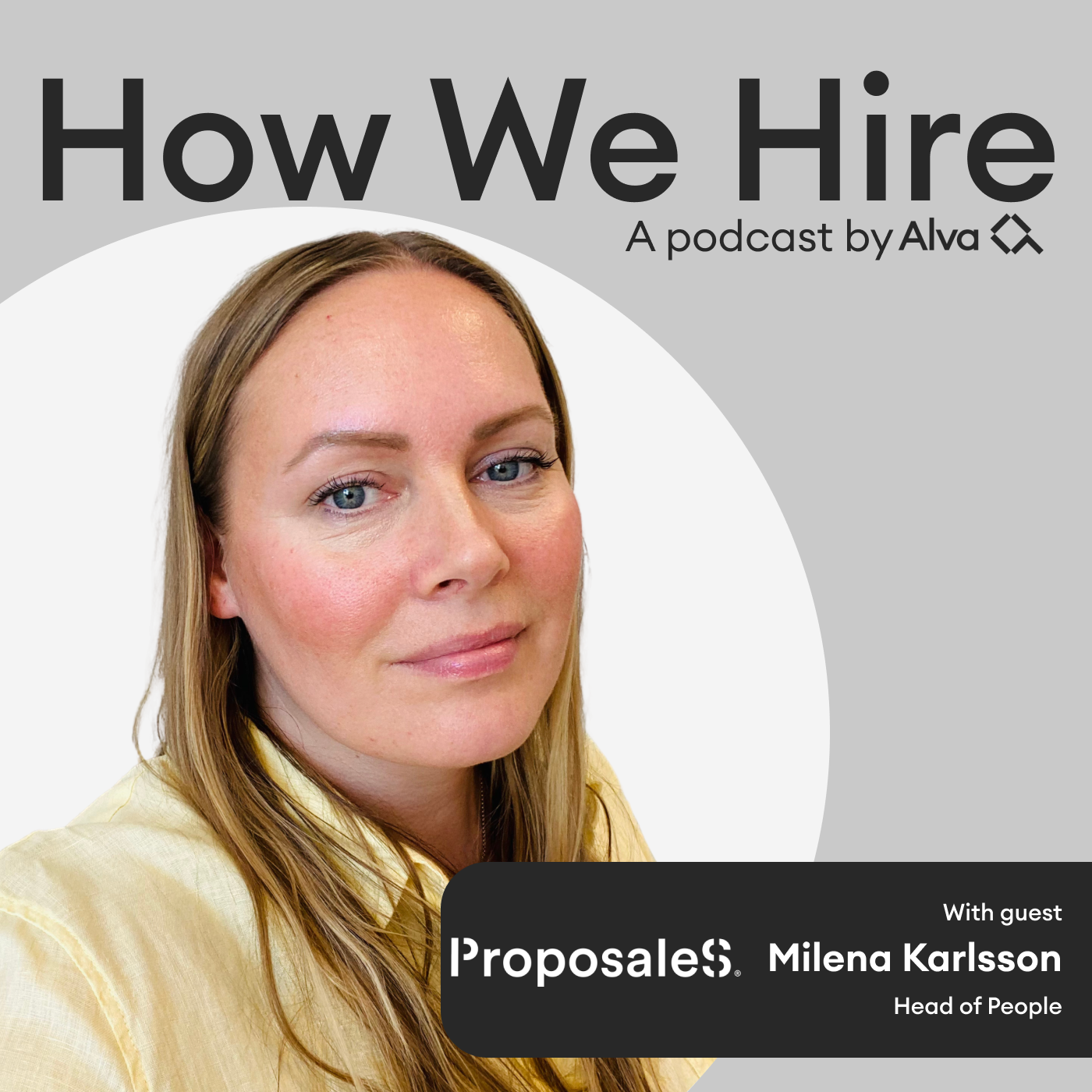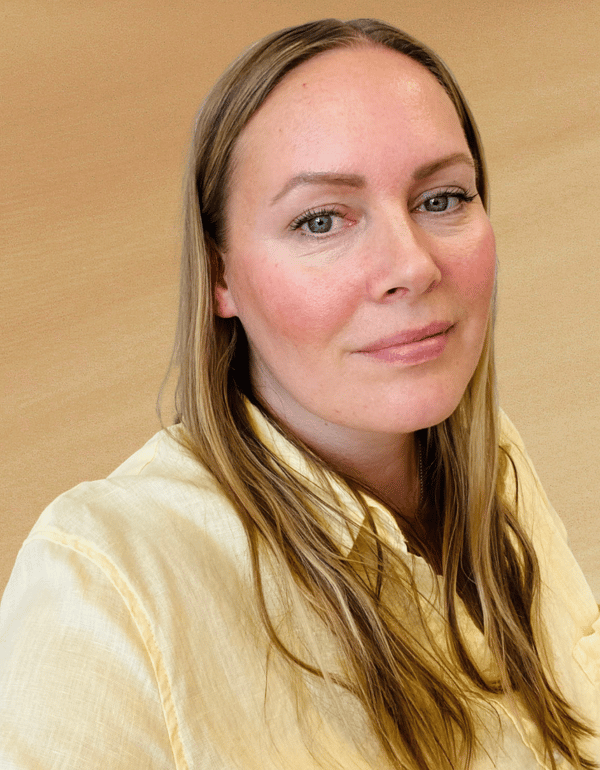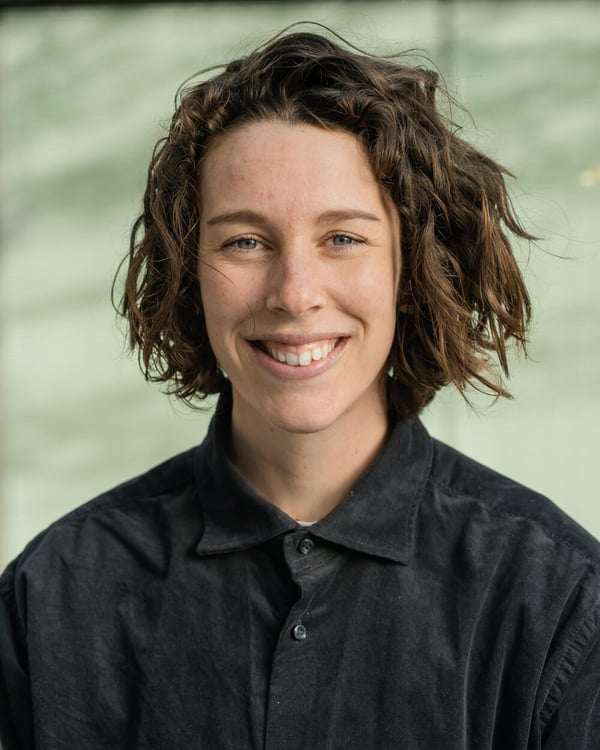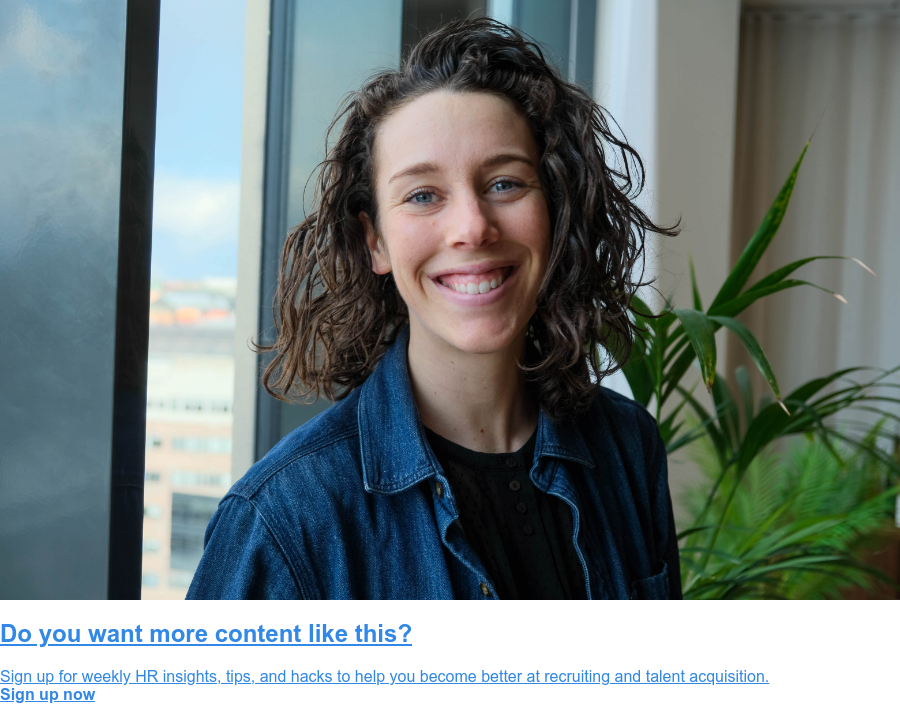How We Hire Podcast: Episode 11 Transcript
Linnea Bywall (00:00):
... or we need to be objective and data driven to reduce biases or we need to be data driven to increase accuracy. Both of those are obviously true, but the fact that the candidate experience can increase as well. I mean, I think the example that you give with being able to give fair, and clear, and transparent feedback is just such a good point.
Tove Hernlund (00:28):
Welcome to How We Hire, a podcast by Alva Labs. With me, Tove Hernlund.
Linnea Bywall (00:33):
And me, Linnea Bywall.
Tove Hernlund (00:35):
This show is for all of you who hire or just find recruitment interesting. Every episode we will speak the thought leaders from across the globe to learn from their experiences and best practice within hiring, building teams, and growing organizations.
(00:54):
Welcome to another episode of How We Hire. With me, Tove, events and community manager at Alva Labs.
Linnea Bywall (01:00):
And me, Linnea, head of people here at Alva.
Tove Hernlund (01:02):
Our guest on today's episode is Milena Karlsson. Milena has a long and solid background within talent acquisition and human resources, which she's been head of both areas in several fast growing organizations. She's in the forefront when it comes to staying true to the research through all her work. And she's currently revamping the people and recruitment processes at proposal tool company Proposales in her role as head of people and talents. Welcome to How We Hire, Milena.
Milena Karlsson (01:28):
Thank you. It's a pleasure being here.
Tove Hernlund (01:31):
We're so happy to have you here. And in today's episode we will focus on data driven recruitment. Now this is something that me and Linnea are very passionate about. It's something you are very passionate about, Milena. But before anything else, what is data driven recruitment? How would you describe this just so that we have your perception of data driven recruitment?
Milena Karlsson (01:51):
Interesting question. What is data driven recruitment? I mean data driven recruitment is everything to me. I believe this is in the direction that hiring process need to evolve, in my opinion, having been seeing how things have evolved and how business is changing in general. I think this is really the direction businesses need to take in terms of making right hiring decisions. But if I then try to define it, I would say is the use of tangible facts and stats to make more informed hiring decisions. I think that that is as simple as I can put it.
Tove Hernlund (02:30):
And, Linnea, do you agree with this? Is there anything you want to add to this description of data driven recruitment?
Linnea Bywall (02:35):
No, I think that's a great description. I think it's about being able to combine different methods in a way that isn't just relying on gut feeling. And I mean to your point Milena, this is where most organizations will need to head. And I think it's so interesting that we're not there yet because I think if I may take an example, say that you're head of marketing and you know from the data that your webinars are performing really, really bad, but you really like webinars, so you're going to pour all the marketing budgets into webinars anyway. That's how recruitment is done in a lot of places where, "Ah, the data tells us something," or we don't even have data, "But we're going to not trust it and go with our instinct instead." And we know from research that's not necessarily a good thing. So I think we need to use data driven recruitment to a much greater extent than we are right now. So just echo on the description of what it is.
Milena Karlsson (03:39):
Well, if I can just interject something there. I mean, you really stole my example because-
Linnea Bywall (03:45):
Okay. I'm sorry.
Milena Karlsson (03:47):
I use as well because I think in terms of penetrating this way of thinking and reasoning and really largely basing everything on gut feelings, we don't do that in other departments. Why is it so obvious for us that we are taking a data driven approach when we are looking at marketing as an example, but nevertheless in recruitment we think like, "Mm, no, this doesn't sit right with me because my gut feeling or my preconceived notions are telling me something else. It's something that I cannot grasp why we are stuck in that." So excellent example is something that I typically also used to make my point, which gives that, "Wow, yeah, I didn't think of it like that."
Tove Hernlund (04:30):
But now we have to ask the question why is it like this then?
Milena Karlsson (04:34):
That is a good question. I mean, I think it's a matter of having being set a little bit in old ways of working. I mean let's be honest. I mean it's not like before we introduced data driven mindset in recruitment that we were failing miserably, but I think that also we could have done much, much better. And just looking over my career and the mistakes and errors that I have done and people around me have done, kind of learn from those, and then see what can we do to further halls. And I think looking at those scenarios you can really start to pinpoint, when you are staring away from being neutral in terms of the reasons for why we reject someone or why we hire someone, then the further away we are from actually grasping who would be the right fit for the role. I think it's just something comforting and something we've always done and therefore it's hard to stay away from it.
Linnea Bywall (05:33):
I can really echo that, but I still find it interesting because it feels like sales you would never run your sales playbook not based on the data that you have. So to some extent I think it's also about their haven't been enough tools around that have been driving the change to data driven recruitment. There hasn't been the tradition of working that way. But I also think, and maybe we've already touched on this before in other episodes, but the feedback loop from recruitment is so long so that you... The sense of urgency to improve is really hard to get, right?
(06:11):
So when you hire someone, they have a notice period and then they join and then they're newbies and once they're onboarded, it's been like nine months since you hired them and you've hired several people since then. So there's no really feedback loop into really understanding what I did back then impacted what's now happening. Because to some extent I think recruitment is too isolated an organization and therefore don't have to live with the results to the same extent. I might be wrong, but I think it can play a part in this where you aren't forced to evolve your processes at the same tempo and same speed as say marketing as say sales where you have much more direct feedback.
Milena Karlsson (06:58):
I have to agree with you. I think it's so much easier to measure the results in sales or in marketing, and it's so much quicker to see when it's a black hole of not working. Whereas you can, I guess, hide in terms of are we having a high performing person that is the right fit for the job? I mean it can take longer to unveil that. Also, based on a lot of things and leadership based ways in this as well and how you're handling onboarding and so on. There's so many elements but I think it's harder to come to that conclusion if you're not working with the right tools and the right skill sets.
Linnea Bywall (07:33):
I mean you have been working with data driven recruitment, HR in general, and talent. How did you realize this was the way that you wanted to work?
Milena Karlsson (07:43):
I think it's hard to pinpoint an exact moment in time, but I believe that the journey started already some 10 years ago because I had started to get my first experience in working with recruitment, and then I was honored of heading up my own recruitment division in a recruitment company, and I ended up craving reasonable reasons for needing to reject candidates that I would have qualified and thought would be they are super for the job, so why are you rejecting of? What are they based on? I think that that is one aspect of it. And then also, as I mentioned, I've seen the data driven approach slowly increasing in all types of business decision making, but in recruitment we seem to desperately want to cling onto the old ways of working. And I think you're right to the point of we haven't necessarily had the tools in order to do this in a good way. So I'm, of course, very, very happy to see that things are evolving in quite rapidly in that area as well.
(08:50):
I mean you already use my example there of the marketing department where it's obvious. I think it just started to realize like, "Why is it still obvious that we use data to back up our decisions but we're not in recruitment to the same extent?" So really, the more I involve myself in hiring and recruiting, the more I realized that it's so full of all these emotional decisions.
(09:15):
Just looking at an example that I came across in my career is a person's inability to do their job based on their appearance. I mean, how on earth is it possible to know if a person will do a good job based on how they look or dress? I came to the conclusion, it's time that we change this and that's really what I think over the years have been triggering me to take this approach. So I can also back up the reasons why you are not a fit, and out of respect for the candidates that are also investing their time and efforts into applying and going for interviews and explaining, pouring their hearts out in terms of what they have done and why they would be a good fit for the role. To be respectful of that as well.
Linnea Bywall (09:59):
I love the fact that you're coming from a candidate experience perspective because I think it's so easy that the discussion will be... I mean not that's not relevant, but the discussion will be around, well, we need to be objective and data driven to reduce biases or we need to be data driven to increase accuracy. Both of those are obviously true, but the fact that the candidate experience can increase as well. I mean I think the example that you give with being able to give fair, and clear, and transparent feedback is just such a good point. Okay. So you learn to love it. How have you gone about implementing this way of thinking and working into the places that where you have been in charge?
Milena Karlsson (10:43):
It has not been an easy journey. Like I mentioned before, a lot of people seem to take comfort in the old ways of working and sticking to their gut feeling and being comfortable in that. And I think also pointing out how filled with bias a gut feeling approach to hire is, it's not really going to make people jump for joy and wanting to jump ship. They would rather take it as, "Okay, you're personally critiquing my style." So I think the approach that I have taken in terms of sneaking this in is really to roll it out in small improvements over time. So we could have started with having a competency based approach in terms of the questions that we're asking, introducing scorecards to make sure we have a same way of evaluating the candidates, and just really trying to back my cases up with the data and also having a scientific approach in terms of what does scientific research say about this.
(11:44):
And really showing those facts and numbers and also pointing out what the cost for wrong hires is and looking at the staff turnover, for instance, during probation, it really... How shall I say, nailing that faulty link and the connections that I see associated with how the processes looked like before and what needs to be improved, and really offer a solution to mitigate the hiring challenge that I would've seen. So there's one thing in terms of winning over someone like, "Yeah, we need to introduce this tool, this is a good way of going about it." But then it also needs to be implemented and approved and adopted by the hiring managers that you're working with. And I've had my fair share of skeptics there as well.
(12:29):
But I think over time with giving it a shot and then ending up really showing solid results, following up on performance of the new hires, and showing them the numbers which are improving, retention is higher. And of course the hiring managers seeing that the performance is in alignment with what they want it to be, they have come to realize the benefits and really embrace the new ways of working.
(12:58):
Just to showcase one example, in my previous job I set out to improve the hiring process, the overall process, and also decrease the termination during probation because we saw that that was sneaking up on us as a little bit of an issue. After then having a full year of working with the non-biased and structured recruitment process, we literally eliminated all the signs of termination from both ends during probation. And I mean we've used tools for that, of course, to help us be stay neutral and we've also improved the overall process, and improved quality of questions, and improve the level of competence that the hiring managers have when they go in the interview process as well. So yeah, that has really been my way of introducing it. And then slowly, bit by bit, it's hard to chew if you roll out a full scale plan. So I think you need to do it in stages really.
Linnea Bywall (13:57):
I have so many follow up questions. If someone was completely new to this, what are the, I don't know, three, five, 10 things, I don't know how many you have that are on the list of what you've snuck in?
Milena Karlsson (14:07):
Definitely making sure that we have a very, very good what we call startup call. So really having an interview to interview the hiring manager in terms of what it is you're looking for, really scoping that up in detail to have an understanding and the discussing around what is realistic and what is not. So we have the framework set, this is what we're looking for, these are the terms that we can offer, et cetera. So that has been really the stepping stone, and some investing in that work has really shown to improve the quality of the process and the quality of the candidates.
Linnea Bywall (14:44):
I think this is so relevant and everyone says it, but it's also vague what to actually do in those startup calls. So what's your best questions to ask a hiring manager?
Milena Karlsson (14:55):
Good question. So I mean what are you looking for? And that is a vague question, but breaking that down, what does that means in skills? What are the expectations? What will they be measured on? What type of skill sets do they need to process in terms of doing this job? Also, challenging, who would you see as your dream candidate if you have one or someone that we would use as a guiding principle, why is that? And what else is important in terms of building a complimentary skill set into the org or the team that's already in there? I think those have been the fundamental questions and also aligning expectation. When do you need to have this person on board, where do you think we can find them? And so on.
Linnea Bywall (15:40):
You have a clear startup meeting. What else is on the sneaking in that list?
Milena Karlsson (15:44):
Well, we've also done a little bit of training in terms of the benefits of having a competence based interview technique and why, so we're not walking in winging it and what the pitfalls can be in that. And then also using scorecards to evaluate, and then of course tools such as Alva Labs in terms of helping us screen for potential. And that has been a challenge in itself as well in terms of really showcasing what the benefits are of working with potential as opposed to staring yourself blind on a CV, a number of years of experience because as we all know in this room, that doesn't really say a lot.
Linnea Bywall (16:24):
Okay. So it sounds like introducing structured interviews and training in that, and have you also helped the manager design questions or how have you gone about nailing the interviews?
Milena Karlsson (16:36):
I had the luxury of working with the dedicated TAs, so they could drive a lot of the initial conversations and the first screenings and that was of course done in an anonymous way. But yes, we have also helped hiring managers in terms of building that relationship so they feel the trust that they can come and talk to us and ask for advice if they need it because not everyone is an expert on hiring and it's art in itself looking for the right things and making sure that you can capture that in this one hour call. So yeah, we have been helping them as well in terms of setting up relevant questions and really challenging what it is you're looking for and what type of questions you should ask.
Linnea Bywall (17:16):
So startup meeting, interview scorecard. I'm assuming that means rating the answers of the interview in some way?
Milena Karlsson (17:24):
Yes. Sometimes you might have the luxury of ending up with a lot of good candidates and then you need to... Again, it's so easy even if you've done a structured interview, again moving into basing it on a gut feeling, like, "Yeah, this person was more bubbly in the call, and this person was not as elaborate in the answers." And, "Oh, this person ended up a couple of minutes late to the call." All of these things start having an impact in terms of evaluating the candidates. So really steering away from that and looking at how do you rate the competencies in terms of the questions you have asked, and really trying to stack up the person that is scoring the highest in terms of the things that are most important to us.
Linnea Bywall (18:08):
And then you mentioned psychometric assessment, because you said that it hasn't always been easy to show that's a help and need to have. How have you gone about doing that?
Milena Karlsson (18:18):
Really, I've done with most cases in terms of taking a data driven approach, it's really showcasing the numbers. It has started from, I think, I see that we are heading in the wrong direction here. We are having high staff turnover or we're not really generating the right candidates, we're not happy with the hires that we have. For what reasons? Well, we're not seeing that they are matching the expectations that we have. I mean it's really been looking at these type of aspects, but then when it comes to introducing this, it's just showing the hardcore numbers. We have these results, we're having a hard time driving candidates, apparently they're not the candidates that we're looking for. So we need to do something.
(19:04):
And also, of course, really pushing hard on the fact that we need to do something different and opening our eyes. So instead of having biased in terms of how we screen, looking at the CVs disqualifying because that didn't look good for some reason, and then going over to the next instead just having everyone have an equal opportunity in terms of looking at probability to be a good fit for the role.
(19:32):
So it's really been about flipping everything, having a neutral basis for how we evaluate because we've clearly skipped a lot of superstars in the making that we simply have screened or eliminated in the screening process because we have not been open to measuring and looking at the potential. So that was definitely an eye opener.
Linnea Bywall (19:55):
I love the meta perspective of using data to showcase data driven recruitment matters.
Milena Karlsson (20:01):
Yeah. I mean facts don't lie and neither the data. So it's the perfect thing to bring into any argument that you can't argue with facts.
Linnea Bywall (20:11):
Yeah.
Milena Karlsson (20:12):
That's how you win.
Linnea Bywall (20:13):
Now you've counted up individual things that you've done to improve on the data driven recruitment and how to work in more data driven way, but it feels like one of the foundations is to have the overall structures. So having a good applicant tracking system, has that also been important or have you managed to do this in some other way?
Milena Karlsson (20:33):
If I look early on when I started my career working with recruitment, I literally had an inbox of influx in a very unstructured way. So I have to say I've really made the journey of having a structured way of dealing with candidates coming in through an email really to onboarding like a solid ATS where you can have good application tracking and really following up and making sure that you are catching any type of feedback or response that you need to get. I think it's important to have a good ATS to support this, especially if you're dealing with higher volumes of recruitment.
Linnea Bywall (21:10):
To that point, like structure and data driven recruitment go so much hand in hand in my book.
Milena Karlsson (21:17):
I do agree with you Linnea, they do go hand in hand and I think the benefits of having an ATS as well is that you can really follow up on the analytics part of actually looking at the numbers. What are they telling you? They're telling you a lot there as well. So you can gather a lot of intel and have a data driven approach in terms of also improving the recruitment process if you need to and focus on where you need to source your candidates, where is the main traffic coming in from and why? And also making cost efficient decisions, so we're not just chucking a lot of money on certain things as you were saying, let's spend all our money on webinars. Well, it's not generating anything to the business. Yeah, well, it's not sustainable. So you need to have that cost aspect in mind as well.
Linnea Bywall (22:05):
And I think that's a great point of being data driven in your employer branding work as well. So knowing where to spend the resources to lure the candidates into the process, and then treat them in a data driven way. You mentioned a lot of numbers where you look at this number and then it improved and so forth. Before we jump into what the outcomes were of implementing a data driven recruitment process, I would love to know what numbers do you see as most important in TA in hiring?
Milena Karlsson (22:41):
Most important. I mean, we have of course the most overrated KPI of all times in my opinion. And that is time to hire. I mean it's by far the most popular thing to measure and I have been in the same, I've done it myself. I must shamefully admit. And I think, I mean just looking at time to hire, I mean it has zero correlation between how fast you hired someone and how good of an employee they are going to be or how good fits, none, really, really none. So I mean what are we measuring here really? Why are we shouting that this is really important when it has no correlation? So I think time to hire is something I have slowly moved away from. I mean it all depends of course if you are a TA team, you have specifics that you're tracking that is important. But I think something that I would really like to wave my flag in is cost per quality, which comes tightly with cost per hire. I mean cost per quality is such an underrated KPI.
Linnea Bywall (23:49):
How do you define cost per quality?
Milena Karlsson (23:52):
It's really looking at the activities that you've been doing in terms of what you would determine being unsuccessful hire. So have you been running social marketing campaigns? Have you been head hunting? What sources have you been head hunting on? Have you had a dedicated head hunter? Have you used an external agency? How much time and money? I mean you can break this down, it might be a little bit cumbersome, but I think you need to start looking at breaking down the activities you've done and then put the price tag on that, and then really converting that in terms of, "Okay, did we find the dream candidate or the superstar that we were looking for?" "Yes we did." "Okay, well that was a solid investment then." Can that be applicable in the next time we're looking for someone in another department, et cetera? And I think, again, taking that data driven approach in terms of making sure we're doing the right activities that is really going to generate the result that we want to have.
Linnea Bywall (24:49):
I am writing stuff down learning. Okay. So then you mentioned cost per hire. Why do you think that matters?
Milena Karlsson (24:57):
Yeah. I mean it goes a little bit hand in hand, but I would like to focus on cost per quality because that's really what we're after. I mean I think we're all after quality superstars to join our team, or at least having the right person fit for the role. But I think in terms of, again, planning the activities and doing the right things, making sure that we are a well-oiled machine, focusing on the right activity that actually will be generating a results is important.
(25:26):
And let's be honest, I mean, people TA teams, they are considered a cost to the company. So we're never going to have that business revenue generating. I think we really need to prove ourselves a little bit more. That's at least only my opinion and my reflections. But since we are considered a cost, then I think it might be a little bit more challenging in terms of sometimes winning over initiatives that we need to do. So I think really looking at having an efficient process that is as cost friendly as possible, or at least making sure that we are spending money on the right thing that is bringing good quality and, as a result, also, ultimately revenue to the company. It's an important aspect to have in mind.
Linnea Bywall (26:14):
Given that over the last couple of years a lot of organizations have brought home recruitment, at least in the Swedish market where it used to be external, now it's internal, which is really easy to show that it's cheaper. And now I heard of some cases where some organizations are flipping and taking it external again. I think that's really interesting to your point of needing to prove the value of what it brings. One more question on metrics. What's your take on quality per hire? Can it be done? Can it be measured?
Milena Karlsson (26:48):
I think it takes a little bit longer to measure quality because you really need to onboard that person and you really need to come to a point where you see this is a performing person in the role. So I think perhaps this is something that you need to do on a yearly rolling basis as opposed to having short month or quarterly. But really again, it's looking at evaluating the performance and, of course, setting the criteria.
(27:16):
Again, going back to that initial conversation that we had with the hiring manager, what are your expectations? What will they be measured on? What are you looking for specifically? Really looking at that, "Okay, how is this person performing in relation to that? Would you say it's high, medium, is it low?" I mean, really at the end of the day we want to have high performing. So when we have come to the conclusion that this is a high performing person based on the set criteria, then you can really start looking down at the cost aspect and breaking down the amount of time it took to hire and the initiatives not necessarily of looking from a time to hire perspective, but really seeing all the efforts and that was put into it. And then at the same time also being able to evaluate, could we have done something more efficient? Could we automate something? Could we outsource some part of this?
Tove Hernlund (28:08):
It is really challenging because to some extent it's like it is the holy grail of hiring. The way we have approached it, I'm not saying it solves everything and it's perfect, but it's a approach is that after three and five months into your onboarding, your manager rates, how you're doing against your ramping targets, and that's actually something that like I measured on. I show those numbers each month to my manager and to the organization, and that's what our recruiters are measured on.
(28:41):
So we try to get that feedback loop even if it is quite far extended into the future. When you do the hire, it's still, "I want to drive the behaviors, your job isn't done until we know that it's a good hire." I think again, not perfect, but I think it's hopefully at least pointing us in the right direction. You talked a little bit about what had improved, what had changed when you implemented data driven recruitment. Do you want to highlight some that you're most proud of?
Milena Karlsson (29:13):
The number one thing I'm most proud of is that we have more quality in the process and the way respectful way of handling the candidates, and also the fact that we managed to eliminate all of the wrong hires during the probationary period. So we really also saw a boost in looking at the performance. I started also to see the tendency from a year on year basis that performance was higher so our high performers increased. So it was going from around, I think, 40% and then going up to over 50 and then starting to reaching over 60, and I mean, we had solid performing people, but we're talking about high performers now. So that was really amazing to see how that was walking hand in hand along with the fact that we didn't make any wrong hires and they were onboarded as well in a good way.
(30:12):
So every part in the chain of what we have done to improve, including the onboarding process and really making sure that we're able to get them up to speed in a good way. That entire chain of starting from scoping out what we're wanting in terms of having a high performing person, that entire chain you could really see that as a reflection in terms of how the high performing people starting to increase, which is fundamental because working in such a fast pace and so many things happening, it was important for us to have high performing people that could really live up to the pace that we were running in. So that was fantastic to see and something I'm very proud of having accomplished together with my fantastic people team.
Linnea Bywall (31:03):
That's absolutely... Did you anticipate it to be that big of a difference?
Milena Karlsson (31:09):
No. I didn't. I think I set my hopes lower in terms of us wanting to fix what we saw as becoming a little bit more of an immediate issue. And then just seeing how this evolved in terms of all the improvements that we could take in every step of the process, it really exceeded my expectation and it was such a joy to see.
Linnea Bywall (31:32):
If we should really try to make it as a concrete and actionable as possible for the list. If you were to redo this journey, what would be your first steps?
Milena Karlsson (31:44):
Really looking at the relevant data. I mean the fantastic thing about working with an ATS and the fantastic thing about working with an HRIS is that you can get a lot of data and you can start looking and analyzing that. So I think doing the journey all over, I will be looking at the current process, the data that is available, can I spot in a negative trends and then really try to improve the process based on what it is we want to accomplish or what it is we want to improve. And maybe things could also be great, I mean they're working fine, but then taking that aspect of, "Okay, what can we do to make it even better? What can improve? Is there something we can automate? Is there something that we can do to elevate things to be even better and more efficient?" So I think that would be my approach, really looking at what I have available and then start piecing the puzzle together.
Linnea Bywall (32:40):
What if you don't have data available? I mean that could be the case if you are really new with this or if you haven't mastered stuff properly before this, what would be your approach then?
Milena Karlsson (32:52):
Start small. I think with anything start small. You can't conquer the whole world in one day. So if you don't have any data available, if you're stuck in a desperately dealing with an inbox that I did back in the days, then start small. Really looking at what can be done to improve. You definitely need to adjust your actions and goals based on what means you have and in what capacity you're working. But I think with anything you can start looking at huge plans in terms of what you want to roll out, but at the end of the day, what matters is doing it.
(33:28):
So I think having a goal in mind what the end goal should be like, and work step by step towards that, I think that is going to generate the best results in terms of what is possible to do. And also winning the skeptics over those people that are comfortable asking questions, "Where do you see yourself in five years? Or what do you enjoy doing in your spare time? Please send a cover letter with your application." I mean, these type of old school people, they need to be one over, and they will not be one over by changing everything from zero to 100. So really take it one step out of the time and be proud of what you have accomplished, what you accomplished along the way. And then you add another thing.
Linnea Bywall (34:11):
And if I can add one thing that I think has helped me at least structure my thoughts and how we talk about the process internally, has been like when we do the startup meeting, we try to fill out what we call a combined role fit spreadsheet. Meaning when we know what we're looking for, we decide the process, we decide what method goes where, what do we evaluate and so forth. But then we also assign weights to each step, meaning that we decide like, "Okay, the tests, they should weigh like 40%, and then the first interview they should weigh 20% of the overall decision, and so forth."
(34:48):
So we include all the methods because if we then find ourselves with the final four candidates they have gone through the case, they're all great potential hires, we can look at this overall combined score where it's data driven down to the actual decision making. Because I think it's so easy to be data driven in each step and then fail to combine the data at the end where you like, "Ah, but I like this person." And then you're back in the marketeer loving webinars example. So I think that would be my add on to lock how you make decisions early on as well.
Tove Hernlund (35:30):
Linnea, now you brought up something that most companies might miss. So they work data driven, they focus on that, and then it's still something that they missed in the end. Milena, would you say, is there anything else that companies risk missing out on when they start working in a data driven way?
Milena Karlsson (35:46):
That is very, very interesting question. Do I have an answer on it? That's another question. I think what I have seen, at least if I'll use my perspective, is that in an effort to be data driven, we fail to see the bigger picture. So really here what Linnea was saying here earlier like, what is it that you want to accomplish? Of course, we want to have a fantastic candidate, and what steps should we take in terms of doing that, and what is relevant to based on data and facts, most things I guess. But I think it's about having that complete picture in an effort to be quick and wanting to turn things around and looking at the time to hire. I think we have a tendency to cut the corners, and no, we don't need to do the tests. I know this person from before. Well, even more so, it might be important to do the tests, stay neutral, stay away from the preconceived notions that you have. So really having a holistic approach in terms of what you measure and combining those and then you take a decision based on that.
Linnea Bywall (36:48):
I think that's a great perspective. And if I can add one thing that I have a hunch can be a blocker when it comes to data driven recruitment, it can be that... Because I think a lot of recruiters are probably pretty well aware of these things, but I think that we sometimes over complicate things. I think we need to keep the internal user experience in mind. Sometimes it's better if you have easy to use questions than perfect questions, or that you have an easy to use scorecard with just green, yellow, red, rather than like, "Oh, it's one to 10 behavioral anchors." Even if that's the best way, I think what's your organization ready for. As you said before, start small. So simplicity I think is going to be key.
Tove Hernlund (37:38):
It's time to run this conversation off. Thank you so much-
Linnea Bywall (37:41):
No, no, hold on.
Tove Hernlund (37:41):
What?
Milena Karlsson (37:41):
It's time to go crunch numbers in your HR analytics.
Tove Hernlund (37:45):
It's time to go crunch numbers.
Linnea Bywall (37:47):
It is.
Tove Hernlund (37:49):
For sure. But thank you so much for joining us, Milena. It's been such a pleasure having you with us. Me and Linnea will be back with another inspiring episode of How We Hire in two weeks. Make sure to subscribe via Spotify or Apple Podcasts to never miss an episode. And think two weeks is too long, make sure to check out alvalabs.io for all of our webinars and training sessions as well. Bye for now.
Linnea Bywall (38:10):
Bye.







